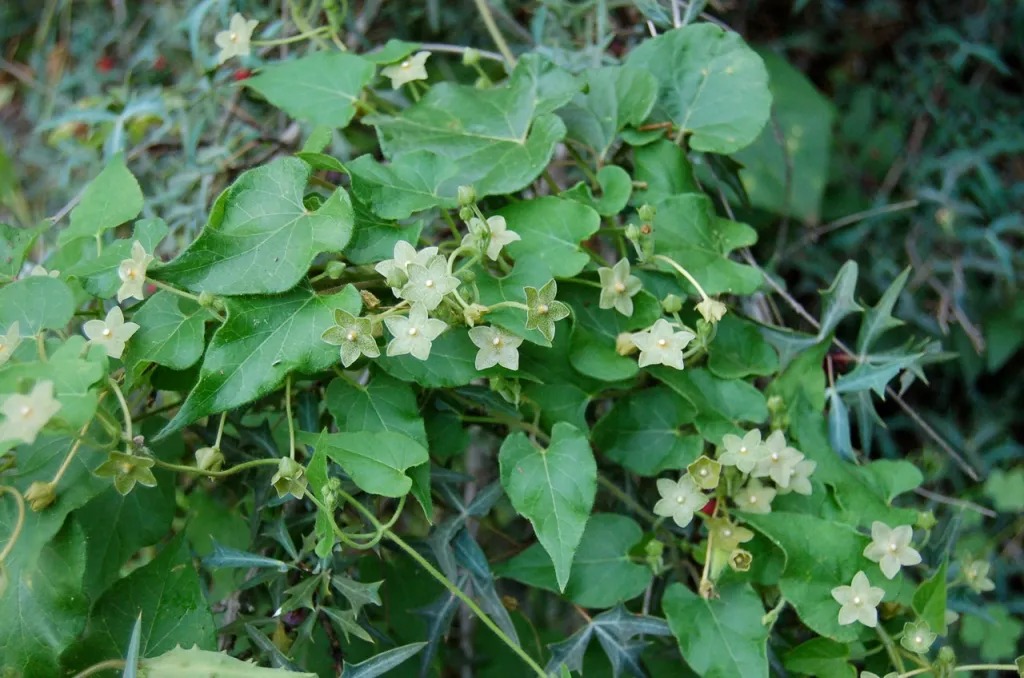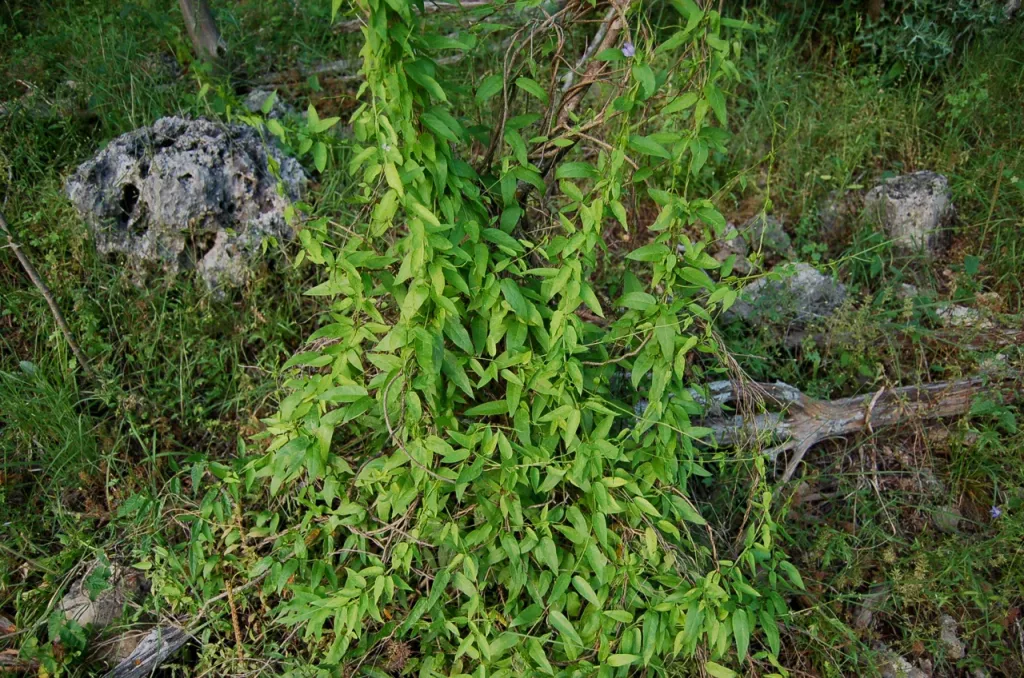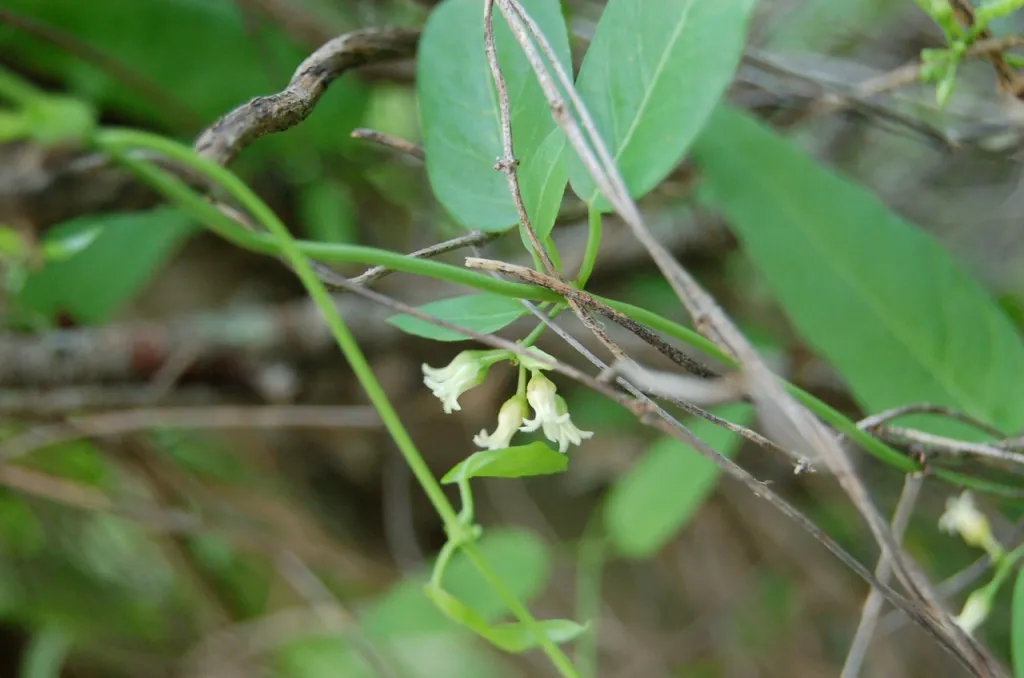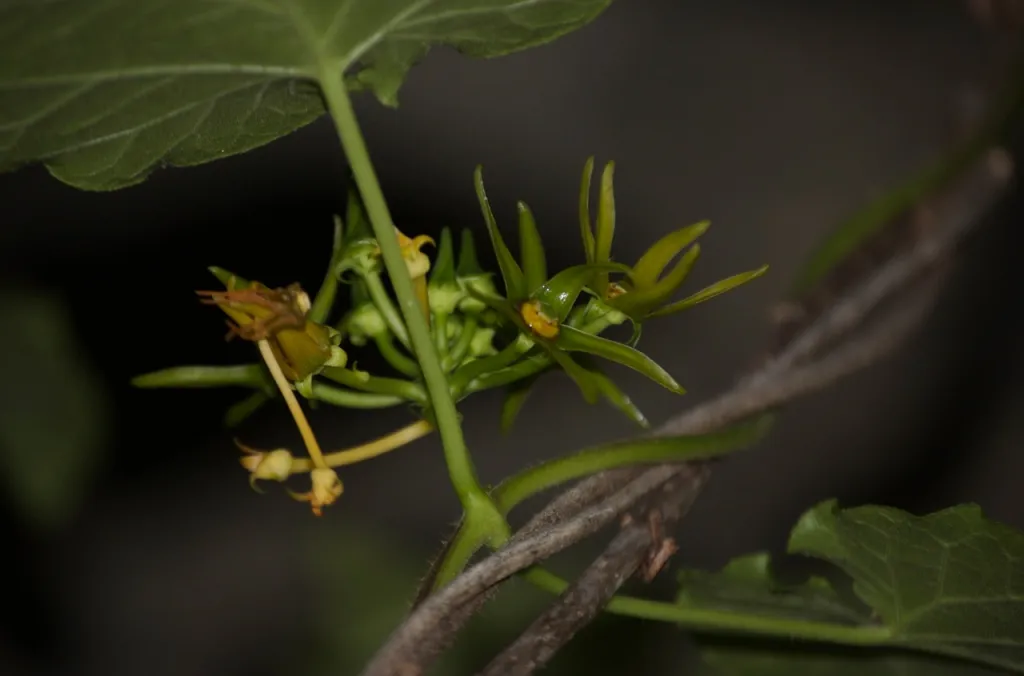By Delmar Cain
Even though it is almost August this year I can enjoy taking a walk around the yard to see what plants are still making some headway in our Texas summer. It is especially fun to see that some of the background performers are doing just fine, thank you ma’m.

By background performers I am not referring to the Virginia creeper, the trumpet vines or even the mustang grape vines. Those three will generally announce themselves at some time during the year. No, I mean those vines that are generally around but may need to be pointed out before they are noticed.
The green or pearl milkweed vine, also known as the net vein milkvine, (Matelea reticulata) is one of those performers. If you take a walk at the Cibolo Nature Center, Boerne Lake, or any of the Kendall County parks or nature areas you will surely pass a pearl milkweed vine at some point on your walk. Once you have identified it you will see it frequently.
As its name indicates it is in the Milkweed Family (Asclepiadaceae) and like most milkweeds will ooze a milky sap if a leaf is broken. It generally can be seen climbing or twining on brush, a fence or up a small tree and although not aggressive may reach a height of 6-8 feet. The flower, even though not large or colorful, is still eye-catching because it has a pearl-like dot directly in the center of the 1/2-3/4 inch green flower. The big heart shaped leaves, 2-4 inches long, are also helpful in locating the plant.

Bearded swallow-wort or cynanchum (Cynanchum barbigerum) is another background performer but it is not so easily found. The first time that I saw the plant was on my own property after I had lived there for 5 years. While looking at black-eyed susan, I noticed a small vine climbing on a persimmon bush. Having no luck in identifying it, I sent a picture to my friend, Lottie Millsaps, who gathered many plant specimens for the San Antonio Chapter of NPSOT for their herbarium.
Lottie’s first question to me was whether the plant was a milkweed vine and I didn’t have a clue. I went back to the vine, broke a leaf and sure enough there was the telltale sign of milky sap. She immediately informed me that it was a bearded swallow-wort, which is native to the Edwards Plateau and South Texas. It can be found twining on boulders, shrubs and small trees and reaches a height of only 5 to 6 feet.

The creamy white flowers are pretty, but tiny—only 1/8 inch. The dark green leaves are linear and 1/2 – 1 1/2 inches long. The vine is not aggressive and the visual appearance of the vine with it abundant leaves is very pleasing.
The last vine that I will mention is another milkweed vine, the anglepod or angularfruit milkvine (Matelea gonocarpos). This vine is found as far north as Illinois and from Texas to the eastern seaboard, although it is listed as a threatened plant in Florida. According to the US Department of Agriculture map, Kendall County appears to be on the plant’s western boundary except for a specimen from El Paso County.
The anglepod, more likely to be found in a ravine or a hardwood forest, is a more robust vine and may reach a height of 20 feet. Like the pearl milkweed vine it has a heart shaped leaf that can be 6 inches in length. Its flower is similar in appearance to the pearl milkweed in its simplicity. The five narrow petals of the flower are green and about 3/4 inch long. The center of the flower is a small yellow raised dot. The petals are capable of closing around the center.

These vines are not the stars in the growing season. They are more like the members of the chorus that stay in the background and support the more flamboyant members of the cast. Even though they are in the milkweed family, none of them are listed as host plants for the monarch. Even so, I have witnessed a monarch caterpillar feeding on a pearl milkweed vine. I have also seen a queen caterpillar feeding on a pearl milkweed vine.
Other butterflies visit a number of plants for nectar and the small flowers of the bearded swallow-wort attract the variegated fritillary butterfly. I have not found much information on the anglepod, even though it is distributed across a much larger geographical area. It just may not have grabbed the attention of a botanist other than for the purpose of identification and classification. For now I leave it to your imagination as to how it fits in with the Nature’s annual performance. However all three certainly add to my enjoyment of the show.
